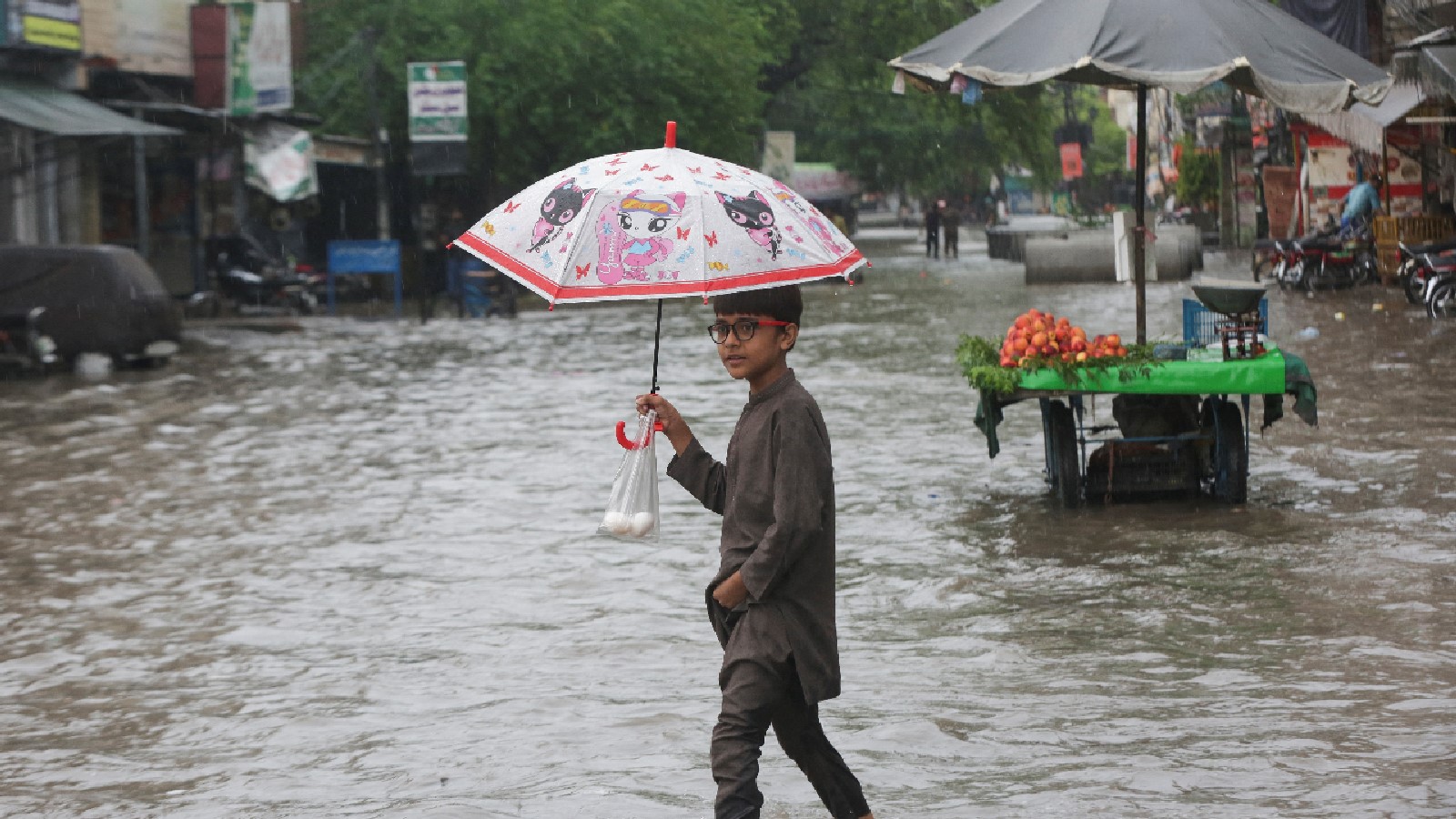A surge in fatalities has tragically struck Pakistan due to ongoing monsoon rains, resulting in the deaths of 63 people across the country within just 24 hours. This distressing number emphasizes the significant impact of the current monsoon season, which usually brings substantial rainfall but this year has caused an especially damaging deluge, straining infrastructure and threatening communities. The somber figures illustrate a fast-growing humanitarian crisis, leading to urgent appeals for assistance and extensive disaster response measures.
The ferocity of the recent downpours has been unprecedented in many regions, triggering widespread flash floods, landslides, and house collapses. Vulnerable populations, particularly those residing in low-lying areas or in poorly constructed dwellings, have borne the brunt of nature’s wrath. The sheer speed with which the death toll has mounted indicates the sudden and overwhelming nature of the disaster, leaving little time for residents to evacuate or secure their homes. This rapid escalation of casualties suggests a confluence of intense precipitation and insufficient preparedness measures in various locales.
Government officials and rescue teams are struggling to handle the vast scope of the catastrophe. Relief efforts are in progress across various impacted zones, although reaching isolated and inaccessible areas is still a major hurdle. Roads are flooded, bridges have been destroyed, and communication systems are down, hindering the prompt distribution of supplies and medical support to those extremely in need. The primary aim is now on rescuing individuals who are stuck and supplying urgent aid to those who have been displaced, many of whom abruptly lost their homes and means of living.
The monsoon season, typically spanning from July to September, is a critical period for Pakistan’s agriculture, replenishing water reserves vital for irrigation and sustenance. However, in recent years, the intensity and unpredictability of these rains have amplified, largely attributed to the exacerbating effects of climate change. While monsoons are essential for the country’s ecological balance and economic stability, the shift towards more extreme weather events presents a recurring and escalating threat to human life and infrastructure. This year’s catastrophic 24-hour period serves as a stark reminder of this evolving climatic pattern.
Reports from different regions depict a distressing scenario. In Khyber Pakhtunkhwa, the northwestern area, mountainous regions are notably prone to landslides, which have caused many casualties. Balochistan, the southwestern region, famous for its dry landscape, has also experienced intense flash floods, as its parched riverbeds quickly turn into powerful deluges. Punjab, the province with the largest population, has faced urban flooding, disrupting everyday activities and confining people to their homes. Sindh, situated in the south, continually contends with the threat of the Indus River reaching perilous levels, forcing the displacement of thousands.
The immediate aftermath of such widespread devastation includes not only loss of life but also significant damage to property, livestock, and crops. Homes, farmlands, and vital infrastructure such as power lines and water supply systems have been severely compromised. This destruction will have long-term repercussions on the affected communities, many of whom are already struggling with poverty and limited resources. The challenge extends beyond immediate rescue and relief to encompass the daunting task of rehabilitation and reconstruction, which will require substantial financial investment and coordinated efforts from both governmental and non-governmental organizations.
The swift escalation in the number of victims over a brief period also prompts inquiries into early alert systems and strategies for disaster readiness. Although Pakistan has advanced in handling disasters, the magnitude of this recent rainstorm seems to have surpassed current systems. The necessity for stronger, region-specific alert networks, improved evacuation strategies, and infrastructure that can withstand climate impacts is increasingly clear. Allocating resources for flood protection, upgrading drainage facilities, and informing communities about emergency procedures are vital measures to reduce potential damages.
Furthermore, the humanitarian implications extend beyond immediate safety. The displacement of thousands of people increases the risk of waterborne diseases, food insecurity, and a lack of access to essential medical care. Makeshift shelters and overcrowded relief camps can become breeding grounds for infections, particularly in areas where sanitation infrastructure is already fragile. Ensuring access to clean drinking water, adequate food supplies, and medical attention for the displaced populations is now a critical priority for aid agencies operating on the ground.
The global community is paying close attention to the circumstances, with expectations that appeals for worldwide aid will grow stronger as the extent of the destruction becomes evident. Pakistan, a nation that has traditionally faced an outsized share of the effects of climate change despite its small role in contributing to worldwide emissions, often depends on international aid in situations like these. The present disaster vividly highlights the interconnected nature of global climate systems and the collective duty to address their harmful impacts on nations at risk.
Looking ahead, the ongoing monsoon season poses a continuous threat. While the immediate focus is on rescue and relief, long-term strategies for climate adaptation and resilience building are paramount. This includes a multifaceted approach encompassing improved urban planning, sustainable water management, reforestation efforts to prevent soil erosion, and the development of climate-resistant agricultural practices. The recurring nature of these extreme weather events necessitates a paradigm shift from reactive disaster response to proactive risk reduction and climate preparedness.
The tragedy unfolding in Pakistan serves as a powerful reminder of the urgent need for global cooperation on climate action. As countries worldwide grapple with increasingly unpredictable weather patterns, the human cost of climate change becomes devastatingly apparent. For Pakistan, the next few weeks and months will be a test of its resilience, as it strives to recover from the immediate aftermath of these lethal rains and build a more secure future against the backdrop of a changing climate. The lives lost in this 24-hour period represent a profound and painful reminder of the critical importance of addressing this global challenge with immediate and concerted efforts.




